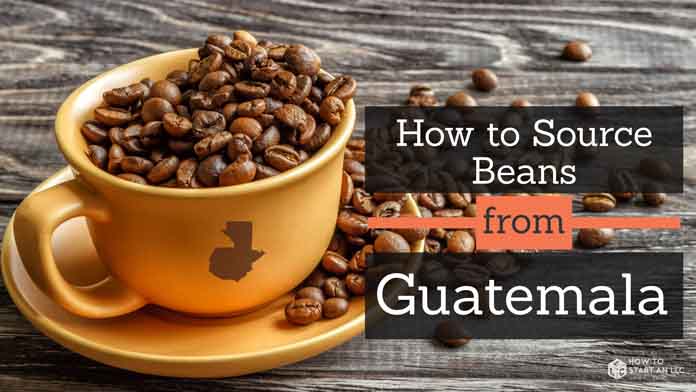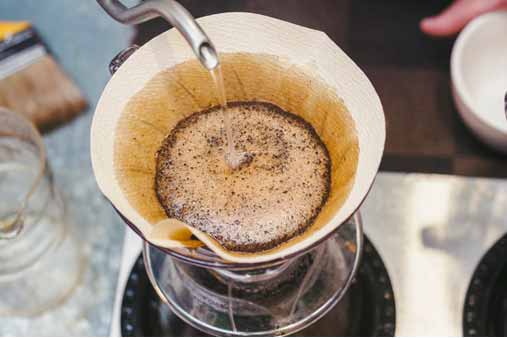How to Source Coffee from Guatemala
Navigating the ins and outs of coffee sourcing can feel like an overwhelming and complicated process.
This guide summarizes what’s involved — and what to look for — when buying coffee beans from Guatemala so you can make an informed decision for your roastery.
Recommended: Read our full, in-depth How to Start a Coffee Shop Business guides, inspired by coffee professionals, they will help make your coffee dreams real, from sourcing beans to hiring baristas, choosing the best POS system, forming an actual company, and everything in between.

Why Guatemala?
While it may no longer rank among the world’s major coffee producers in terms of volume, Guatemala retains a reputation for producing high-quality beans with complex flavor profiles.
The country’s diverse landscape, which includes more than 300 microclimates, and variable weather patterns enable it to grow a wide variety of coffee plants. Rich, volcanic soil is a trademark of Guatemalan coffee production, and its farmers tend to follow the washed or semi-washed process when harvesting their beans.
Guatemala's Growing Regions
Given Guatemala’s vast diversity, here’s a guide to the key characteristics found in its main coffee-growing regions:
Antigua
- Flavor Profile: Located among three volcanoes, this region’s fertile soil produces the country’s best coffee. While more expensive than other Guatemalan coffees, Antiguan beans rightly earn that premium. Buyers should watch out for imposters as farmers from other regions sometimes attempt to label their beans as Antiguan in order to charge a higher price.
- Processing Format: Washed and semi-washed
- Average Harvest Season: January to mid-March
Acatenango
- Flavor Profile: At an elevation of roughly 6,500 feet, this region can sun-dry its coffees to give them a unique flavor profile. Its proximity to the ocean, forests, and volcanoes also make it ideal for coffee farming and processing due to its high soil fertility and lower temperatures.
- Processing Format: Traditionally, farmers in this region fully wash and sun-dry their coffee cherries after hand-harvesting and sorting them.
- Average Harvest Season: December to mid-March
Atitlán
- Flavor Profile: Known for its full-bodied, acidic coffees, the Atitlán region boasts a wetter climate than most other coffee-growing regions in Guatemala. The surrounding volcanoes make its soil one of the richest and most fertile in the country. In addition, this region is known for its small farms on which skillful farmers work by hand.
- Processing Format: Washed and semi-washed
- Average Harvest Season: December to mid-March
Fraijanes Plateau
- Flavor Profile: A mountainous region with soil rich in potassium and volcanic ash, the Fraijanes Plateau produces beans with a full body and complex flavor profile comparable to those from the esteemed Antigua region.
- Processing Format: During the dry season, farmers in this region sun-dry their coffees after using the washed or semi-washed process.
- Average Harvest Season: December to February
Highland Huehuetenango
- Flavor Profile: A neighbor to Mexico, this region is one of Guatemala’s driest with about 70 inches of annual rainfall. Its high altitude and high humidity allow for a fairly predictable growing climate, producing coffees with a flavor profile similar to wine.
- Processing Format: Washed and semi-washed
Average Harvest Season: January to April
Oriente
- Flavor Profile: This region earned a reputation for producing balanced, aromatic, and acidic coffees — largely due to the level of metamorphic rock in its soil. Small families typically operate the region’s farms with nearly every farm producing coffee.
- Processing Format: Washed and semi-washed
- Average Harvest Season: December to March
Rainforest Cobán
- Flavor Profile: Unlike Guatemala’s other coffee-producing regions, Rainforest Cobán has high humidity and an even distribution of rain all year long. This climate encourages coffee plants to flower eight to nine times per year, which means the coffee cherries ripen in a staggered timeframe. With a soil heavy in clay and limestone, the region produces medium-bodied, low-acidity coffee with bright, bold flavors.
- Processing Format: This region’s wet climate makes drying difficult so most farmers mechanically dry their beans after using the washed or semi-washed process.
- Average Harvest Season: December to March
Volcan San Marcos
- Flavor Profile: Guatemala’s wettest coffee-producing region, Volcan San Marcos receives 200 inches of rain a year. That high annual rainfall and an average humidity level of 75 percent causes the region’s coffee plants to flower earlier than plants grown elsewhere in the country. That early bloom time, coupled with a volcanic soil, gives the region’s coffee a complex flavor.
- Processing Format: Due to the region’s sporadic rainfall, farmers pre-dry coffees in the sun and then mechanically wash them.
- Average Harvest Season: December to March
Popular Coffee Farms in Guatemala
Here’s a summary of several popular farms in Guatemala. While we don’t work with these producers directly, these examples offer insight into the common practices of farms in this country.
Finca El Tambor
- The owner, Victor Calderon, is a fifth-generation farmer from a family with more than 100 years of experience growing coffee. This seasoned coffee-grower transformed his family’s business from focusing on Robusta to Arabica beans in 2001.
- This large farm processes all of its coffee with a single, diesel depulper after first picking the coffee cherries in small batches. Staff then fully washes and sun-dries each bean.
- According to Mercanta, the “cupping” notes for this farm’s coffees highlight tart cherry, lime, and cocoa flavors along with an overall dense profile.
Finca San Rafael
- A third-generation coffee farmer from the Valdés family, which founded this farm at the end of the 19th century, now runs the operation. It’s one of the oldest and most reputable coffee farms in the Antigua region.
- Located in a valley between two of the region’s three volcanoes, the farm’s rich, fertile soil produces strictly hard beans — a high classification of high altitude-grown beans from this area. During harvest, farm workers pick the ripe cherries, sort them to remove any debris, and then transport them to a wet mill for de-pulping followed by 12 to 16 hours of fermentation. Finally, wet mill staff sun-dry the beans and consistently rake them to ensure an even dryness.
- This established coffee farm maintains a sharp focus on quality control by frequently sampling, or “cupping,” its beans to ensure a consistent, high-quality product.
San Pedro Necta Organic
- Located in the Huehuetenango region, this farm is part of a community of growers dedicated to differentiating their coffees by using sustainable and organic practices.
- To ensure it could produce high-quality coffees without using harmful chemicals despite the impacts of climate change, this farm developed new ways to protect its shade and soil biodiversity.
- Approximately 138 producers within the Association of Integrated Development of San Pedro Necta (ASODESI) own this farm and collectively work to maintain quality and fair practices for the farmers in this area.
Key Differences Among Origin Countries
The main differences between each coffee-producing country include the soil, elevation, and temperature associated with farms growing coffee plants.
Fertile soil is essential for producing high-quality coffee. On farms with higher soil fertility, coffee plants can produce larger yields and better defend themselves against disease — especially important when growing Arabica beans, which are susceptible to diseases like leaf rust. Yet, a soil’s fertility largely depends on the amount of volcanic ash, clay, and/or limestone it contains. Volcanic ash, for example, adds valuable minerals, such as feldspar, quartz, magnesium, cristobalite, and tridymite. Similar to the farming of wine grapes, a soil’s nutrient content plays a large role in a plant’s health and the flavor profile of its fruit.
“In order for a coffee plant to produce 100 pounds of green coffee (1 quintal), it must extract from the soil approximately 1.45 kilograms of nitrogen, 0.28 kilograms of phosphorous, and 1.74 kilograms of potassium.” – Luis Alvarez Welchez, manager and agronomist, ProSuelos Initiative
A farm’s altitude, in addition to its soil conditions, directly impacts the flavor profile of coffee grown there. This is because altitude affects the temperature in which coffee plants grow and temperature can boost or hinder a plant’s ability to absorb nutrients from the soil. Moreover, coffee plants growing at higher altitudes and lower temperatures also can photosynthesize longer. This allows the plant to metabolize nutrients in the soil and produce bigger, healthier cherries. The end result is a desirable hard coffee bean with a high sugar content. In contrast, plants that absorb fewer nutrients due to poor soil and/or hotter growing temperatures tend to produce softer beans with low sugar content.
There are, however, exceptions to this general rule. Hawaiian coffee grows at a relatively low elevation, but, due to the island chain’s location far north of the equator and ample shade to guard plants from the sun, it produces high-quality coffee at a lower altitude.
Final Considerations
If you plan to buy your coffee beans from an importer, the process is fairly straightforward. Contact your potential importer to set up a “cupping” event to sample their coffees and then work with them to place your order.
If you prefer to source beans directly from a coffee farm, there’s a bit more work ahead of you. First, you must travel to the farm(s) in order to “cup” their coffee before you make an order. While this “cupping” trip will enable you to start developing relationships with your farmer(s), you will need to hire a translator to accompany you unless you speak the local language.
If you decide to buy coffee beans from a specific farm after your “cupping” trip, you must then connect with an importer to help you with the shipping and handling of your coffee. Why? Because importers have expertise not only in managing customs and duties imposed on coffee shipments, but also on how to properly transport green coffee beans across borders based on the specific varietals and regions from which you order.
When selecting an importer, keep these considerations in mind:
- Storage is a major factor in ensuring the quality of your beans upon arrival. Do some research about the practices of your importer’s transportation services, including temperatures during transport, shipping time, and handling of your product.
- Minimums are another factor in ordering for your business. If an importer has a larger minimum than you are able to roast or store in a short amount of time, you could end up wasting money and product.
- The frequent availability of beans from specific origins also is important. Ensure you’re able to use a variety of coffees and origins provided by your importer as lots can differ wildly depending on season, climate, and politics.
- Some importers also can help you ensure you buy fair trade coffee for your business. For example, Crop to CupTM Coffee Importers, Pachamama Coffee, and Copan Trade LLC are just a few importers offering this service.
Pro Tip: Ask around in your community and online before choosing an importer to gain an understanding of their practices.

